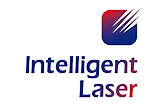The world's major industrialized countries attach great importance to the role of welding research institutions, basically the formation of universities, research institutes, enterprises, three-tier research and development system. The major industrial countries have set up welding research institutes, such as the British Welding Institute (TWI), the United States Edison Welding Institute (EWI), the French Welding Institute (FWI), Japan's connection and dissolution Institute (JRWI), Ukraine's Patton Electric Welding Institute (PEWI). They all belong to national welding research institutes.
Weld tracking technology, one of the main research directions for future welding technology
Sensor technology offers many possibilities for welding operations. Some are inexpensive and have limited functionality, while others require significant investment and thoughtful design - its greatest benefit is the cost savings in use. On balance, laser vision seam tracking technology is the best seam tracking solution available.
The laser vision weld seam tracking system, consisting of a laser sensor and a control unit, uses optical propagation and imaging principles to obtain information about the position of each point in the laser scanning area and to complete online real-time inspection of common weld seams through complex programming algorithms. There are corresponding function settings for detection range, detection capability and for common problems in the welding process. The device calculates the deviation between the detected weld seam and the welding gun, outputs the deviation data, and the motion actuator corrects the deviation in real time to precisely guide the welding gun to automatically weld, thus realizing intelligent real-time tracking of the weld seam in the welding process.
Advantages of optical weld seam tracking
1. Ensures safe welding and perfect welds
2. Reduces heat load
3. Increases productivity
4. Enables the welding gun to be in the ideal position
5. Compensates for production, equipment and operating tolerances
6. Reduces programming effort for complex welds
7. Enables consistent and reproducible welds
Visual seam tracking versus arc seam tracking
With the exception of arc tracking, any weld seam tracking solution for the welding process will add cycle time, but laser seam tracking will add minimal time, typically about a quarter of a second per scan, which is negligible except for position finding applications. Optical seam tracking can reach as fast as 12 meters per minute, so it does not limit the speed of the robot or gantry if high travel speeds are required. Laser seam tracking can also be used for processes other than welding, such as cutting, gluing and grinding.
Laser tracking has particular advantages over arc tracking because it does allow the machine to run over the part or offline. Material inconsistencies such as rust, scale, etc. have little to no effect on laser weld tracking because tracking is based entirely on the imaging of the part.
